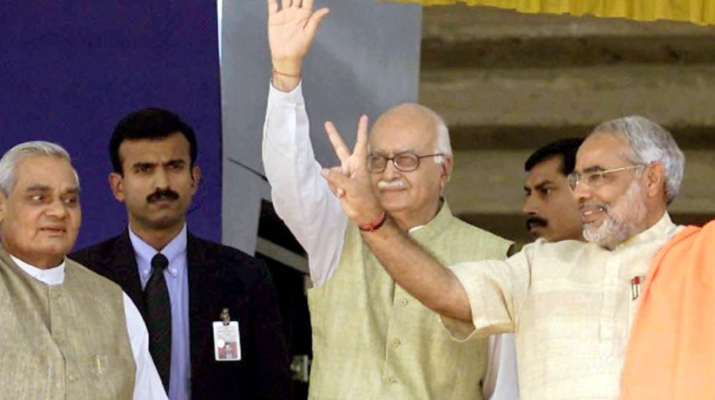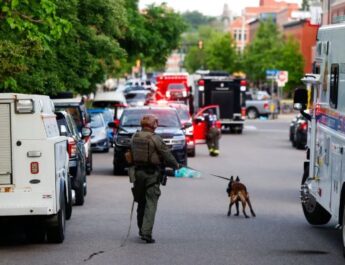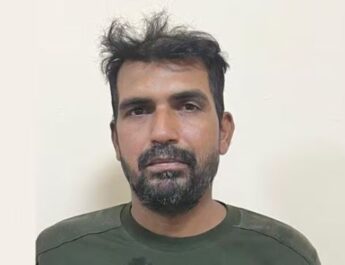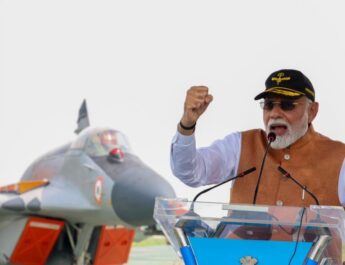The history of the Bharatiya Janata Party is linked to the Bharatiya Jana Sangh. The Jana Sangh was formed in Delhi on 21 October 1951 while the BJP was formed on 6 April 1980. Today BJP is at the highest point in its political history. From the center to more than half of the states of the country, it is in control. His journey from zero to peak has been full of long struggles and ups and downs.
The foundation of Jansangh was laid by Dr. Shyama Prasad Mukherjee. After independence, Dr. Syama Prasad Mukherjee was a part of the Congress government headed by Pandit Jawaharlal Nehru, but on 19 April 1950, he resigned from the cabinet and decided to form a political party as an alternative to the Congress.
Why did Mukherjee leave the Nehru cabinet?
Lakhs of people migrated after the partition of India-Pakistan. Both countries were suffering from gruesome riots, due to which the Nehru-Liaquat pact took place. It was said in this agreement that both countries would set up minority commissions in their respective countries. Dr. Shyama Prasad Mukherjee had a desire for alternative politics in opposition to the policies of Pandit Nehru. Describing the Nehru-Liaquat Pact as Nehru’s policy of Muslim appeasement, Syama Prasad Mukherjee resigned from the post of Union Minister of Industries on 19 April 1950 and took the initiative to form a new political party as an alternative to the Congress.
What was in the Nehru-Liaquat pact?
The Nehru-Liaquat Pact is also known as the Delhi Pact. It was a bilateral treaty between India and Pakistan after the partition of India. There were mainly four things in this.
- Refugees could come to India-Pakistan to settle their property.
- Abducted women and looted property were to be returned.
- The forced conversion was not recognized.
- Both countries were to set up minority commissions in their respective countries.
Through this agreement, both countries had to ensure these things as well.
- The fear sitting between the religious minorities on both sides will be reduced, and mutual relations will be improved.
According to this agreement, fundamental rights were guaranteed to all minorities.
All minorities will be given full rights to be elected to political positions in their countries, and to participate in the civil and armed forces of their countries.
- Both governments will ensure that they will assure complete security to the minorities of their country within the borders of their respective countries. Regarding life, culture, property, and personal respect. Will guarantee them full citizenship unconditionally, irrespective of religion.
- For those who want to take their movable property with them across the border, there will be no restrictions. These included jewelry as well. Before December 31, 1950, all the expatriates who want to come back can come. Their immovable property (house bar) will be returned to them. If the fields are there, then the fields will also be returned. If he wants to sell them and go back, he will have this option too. Forcible conversions will have no validity. The women who were forcibly imprisoned will also have complete freedom to return.
One minister from both governments will be present in the affected areas. There they will ensure that the terms of the agreement are properly followed.
Why was the Jana Sangh formed?
Mainly two reasons were important behind the formation of Jansangh, one was the Nehru-Liaquat agreement and the second was the ban on Rashtriya Swayamsevak Sangh after the assassination of Mahatma Gandhi.
Due to the ban imposed on RSS after the assassination of Mahatma Gandhi, a section of the country started believing that it is necessary to have an alternative to the Congress in the country’s politics. The people associated with the Sangh also needed a political platform to keep their point on the political platform. After resigning from the Nehru government, Dr. Syama Prasad Mukherjee met the then Sarsanghchalak of the Sangh, Guru Golwalkar, where the strategy for the formation of the Jana Sangh was made. Bharatiya Jan Sangh was established on 21 October 1951 in a small program in Delhi.
Founder of Jana Sangh – Dr. Shyama Prasad Mukherjee, Professor Balraj Madhok, Deendayal Upadhyay. The election symbol of Jana Sangh was ‘Deepak’ and the flag was kept in saffron color.
A scar; Two laws, will not work…
In 1953, the Jansangh launched its first major campaign in Jammu and Kashmir on this issue. On the lines of other states, there was a demand to merge Kashmir with India without any special status. At that time, a permit was required to go to Jammu and Kashmir and instead of the Chief Minister, there was the post of Prime Minister.
Dr. Mukherjee saw this as a policy hindering the unity of the country and was strongly against it. On May 8, 1953, Dr. Mukherjee started his journey to Jammu and Kashmir without a permit. After entering Jammu, Dr. Mukherjee was arrested by the Sheikh Abdullah government there on 11th May. Just 40 days after his arrest, on 23 June 1953, the news came that Mukherjee had passed away.
How did the Janata Party emerge from the Jana Sangh?
The turning point in the politics of Jana Sangh came in the year 1975 when then Prime Minister Indira Gandhi imposed an Emergency in the country. The people of Jansangh openly opposed the Emergency. All the leaders associated with Jansangh had to stay in jail for this.
In the year 1977, when Indira Gandhi ended the emergency, the process of general elections started in the country. Forgetting the ideological differences, the opposition parties formed the Janata Party to defeat Indira Gandhi and the Congress Party.
The Jana Sangh merged with the Janata Party. The Janata Party was formed by merging the United Socialist Party, Bharatiya Lok Dal, Congress (O), and Jana Sangh. In the elections of 1977, the leaders of Jan Sangh got good success.
Under the leadership of Morarji Desai, the Janata Party formed the government at the center. In the Janata Party government, Atal Bihari Vajpayee became the Foreign Minister and LK Advani was the Information and Broadcasting Minister.
The Janata Party was divided into many factions from the beginning, one of which was Morarji Desai’s, the second was of Chaudhary Charan Singh and Raj Narayan, the third was of Babu Jagjivan Ram and the fourth was the faction of Jansangh leaders. Socialists had opened a front against the leaders who came from Jansangh.
In 1978, socialist leader Madhu Limaye raised the issue of dual membership. This led to a debate that Jana Sangh people who joined the Janata Party could not live together as members of the Rashtriya Swayamsevak Sangh and the Janata Party, as JP had taken Jana Sangh leaders on the condition that they give up RSS membership completely.
When the socialists asked him to leave the membership of the Sangh, he refused. In such a situation, the political experiment of the Janata Party against Indira Gandhi proved unsuccessful. The Janata Party government fell in 1979. Lok Dal leader Chaudhary Charan Singh became the Prime Minister with the support of the Congress.
Janata Party to Bharatiya Janata Party
The Janata Party split on the issue of giving up its membership in the RSS. The leaders of Jansangh decided to form their own separate party. This is how the Bharatiya Janata Party came into existence.
The Janata Party had to face a crushing defeat in the 1980 Lok Sabha elections. After this, a resolution was passed in the executive meeting of the Janata Party and the leaders of the Janata Party were banned from having an association with the RSS. In such a situation, the leaders who came from Jana Sangh to Janata Party started thinking of new political options. By the time of 1980, the paths of leaders associated with Samajwadi and Jansangh in the Janata Party were separated.
Atal Bihari Vajpayee, Lal Krishna Advani, and other leaders of Jansangh announced a new political party in the name of Bharatiya Janata Party on April 6, 1980, at Ferozeshah Kotla ground in Delhi. Atal Bihari Vajpayee became the first president of the BJP.
BJP’s election symbol lotus
The election symbol of Jana Sangh was ‘Deepak’ while the election symbol of BJP was kept as a ‘Lotus’ flower. The BJP founders made ‘lotus’ the election symbol because this symbol was used by the revolutionaries against British rule. This shows Indianness. The lotus flower is also seen in association with the Hindu tradition. Lotus is also the national flower. In this way, by making the lotus flower the election symbol, the BJP is practicing both Hindutva and nationalism.
BJP before the Ram Mandir movement
Under the chairmanship of Atal Bihari Vajpayee, the BJP entered the Lok Sabha elections in 1984, but due to the sympathy generated by the assassination of Indira Gandhi, the BJP got one seat less than in the first election of the Jansangh. BJP got two seats. Atal Bihari Vajpayee himself lost the election. LK Advani did not contest the election.
First two MPs of the BJP
- AK Patel from Mehsana in Gujarat
- C Janga Reddy from Hanamkonda seat of Andhra Pradesh
When LK Advani became the national president of the BJP in 1986, the party got a new path. By the year 1989, the Rajiv Gandhi government was surrounded by the Bofors scam, on the other hand, the BJP had decided to move forward on the agenda of Hindutva.
In the June 1989 Palampur session, the BJP for the first time passed a resolution to free Ram Janmabhoomi and build a grand Ram temple at the disputed site. BJP kept the Ram Mandir issue in its main political agenda and included it in its election manifesto.
In the 1989 Lok Sabha elections, BJP got tremendous political benefits. BJP increased from 2 seats to 85 MPs. Congress had to face defeat and VP Singh became the Prime Minister of the country. The BJP supported the VP Singh government from outside.
Atal-Advani era: edge to Hindutva
When the issue of Ram Mandir proved to be a lifeline for the BJP, LK Advani became the face of hardcore Hindutva. After this, the BJP started the exercise of giving more edge to the Ram temple issue, because the VP Singh government had implemented the recommendations of the Mandal Commission. The BJP decided to start the Ram Mandir movement under the leadership of Advani to counter the backward-class politics mobilized after the Mandal Commission.
BJP government in three states simultaneously
The BJP came to power in the state for the first time with Advani as party president. In March 1990, the party formed a government in three states simultaneously, including Rajasthan, Madhya Pradesh, and Himachal Pradesh. Bhairon Singh Shekhawat became the CM of Rajasthan, Sundar Lal Patwa of Madhya Pradesh and Shanta Kumar became the Chief Minister of Himachal Pradesh on the same day. Earlier, BJP could not make its chief minister in any state. However, there have been many CMs of the Janata Party.
On 25 September 1990, on the birth anniversary of Pandit Deendayal Upadhyay, BJP President LK Advani started the Ram Rath Yatra from Somnath in Gujarat to Ayodhya. Lakhs of Karsevaks left for Ayodhya with him in this Rath Yatra. BJP reached every house through the Ram Mandir issue.
Thousands of Karsevaks were walking with Advani to reach Ayodhya on 30 October. The Rath Yatra was stopped by the then Chief Minister Lalu Prasad Yadav’s government at Samastipur in Bihar on 23 October 1990 and Advani was taken into custody, but lakhs of Karsevaks had marched to Ayodhya. The then UP CM Mulayam Singh Yadav ordered firing on the Karsevaks here. In protest against this, the BJP withdrew its support from the VP Singh government.
In the year 1991, Murli Manohar Joshi became the President of the BJP. In the 1991 Lok Sabha elections, BJP increased from 85 to 120. Due to the Ram Mandir movement, BJP came to power in UP in 1991 and Kalyan Singh became the Chief Minister.
On December 6, 1992, the Babri Masjid was demolished by the karsevaks. Due to this communal tension increased in the whole country and many incidents of violence took place. BJP’s government in all four states- UP, MP, Rajasthan, and Himachal were dismissed.
Along with joining the Ram Mandir movement, the political rise of the BJP went on. After the Babri demolition, the political graph of the BJP increased in different states of the country. Lotus started blooming in Bihar, Karnataka, Maharashtra, Goa, and Gujarat.
The BJP emerged as the single largest party in the 1996, 1998, and 1999 Lok Sabha elections. Atal Bihari Vajpayee became the Prime Minister first for 13 days and then for 13 months. After this, Vajpayee remained the Prime Minister of the country for four and a half years, because the BJP had conducted the elections six months earlier. The BJP had to face defeat in the 2004 general elections and had to face exile from the country’s power till the year 2014.
Modi Era- Hindutva and Nationalism
Before the 2014 general elections, BJP’s national executive meeting was held in Goa, in which Narendra Modi was made the head of the election campaign. The BJP returned to power with a bang in these elections with 282 seats. From here a new era started in BJP, which is known as the Modi-Shah era.
After this BJP government was formed in many states one after the other. In December 2017, Prime Minister Narendra Modi said, ‘When Indira Gandhi was in power, the Congress government was in 18 states, but when we are in power, our government is in 19 states.’ By March 2018, BJP had reached 21 states. This was the peak of the BJP. In the 2019 Lok Sabha elections, the BJP won a bigger victory than in 2014. BJP won 303 seats in this election. This was the first time that a non-Congress party got a majority for the second time.
BJP of the future
72 years, the journey from 3 to 303 seats, and now the way forward for Modi’s BJP… PM Modi told the workers that 2014 was not just a change of power, but it was the conch shell of the Renaissance. Along with this, PM Modi also put forward a 25-year roadmap while drawing the future political line of the BJP. Where will BJP be when it is 50 years old? How will it move forward from here and in what way will it achieve this goal, PM Modi also gave its mantra to the workers?




